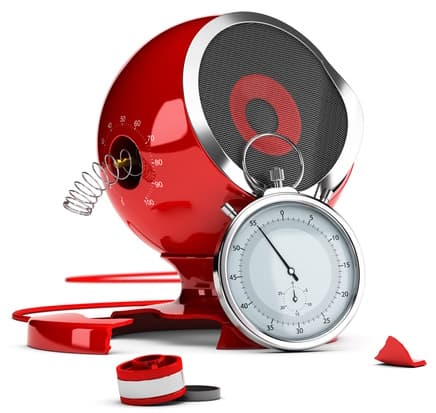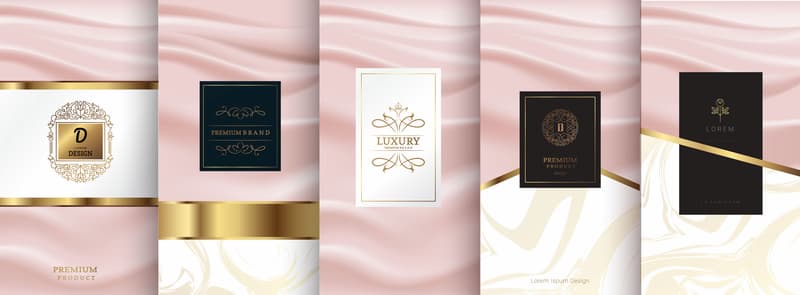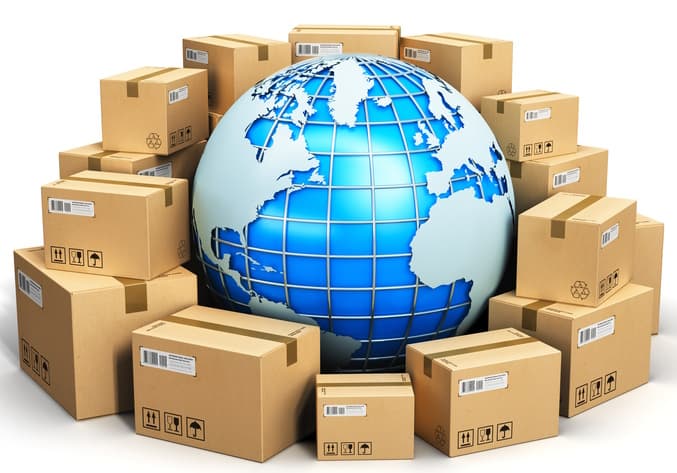Search Results

25 September, 2023
The Making of a Memorable Promotional Product Campaign
Creating a memorable promotional product campaign involves a strategic blend of planning, design, and execution. From the initial concept to the final product distribution, every step plays a crucial role in shaping the campaign's success. In this blog, we'll take you on a comprehensive journey through the behind-the-scenes process of crafting a remarkable promotional product campaign.
Step 1: Define Objectives and Target Audience

The foundation of any successful promotional product campaign lies in setting clear and measurable objectives. Define what you aim to achieve through the campaign, whether it's increasing brand awareness, driving sales, or promoting a new product or service. Moreover, identify your target audience and understand their preferences, interests, and pain points. A well-defined target audience ensures that your promotional products resonate with the right people.
Step 2: Conduct Research

Conducting research is a crucial step in the process of creating a successful promotional product campaign. This stage involves gathering relevant information and insights that will inform the design and overall strategy of the campaign.
Market research involves a comprehensive examination of the market in which your brand operates. This includes analysing the target demographic, understanding their preferences and behaviours, and identifying potential opportunities and challenges.
Identify your ideal customers or the specific segment you want to reach with your promotional campaign. Understand their age, gender, location, interests, and purchasing habits. This information will help you tailor the campaign to resonate with the right audience.
Stay up-to-date with the latest trends in your industry and the promotional products market. This information will guide you in selecting relevant and trending items that align with your brand message.
Step 3: Brainstorming and Conceptualisation

Brainstorming and conceptualisation are essential stages in the process of creating a successful promotional product campaign. This phase involves bringing together a creative team to generate ideas, explore possibilities, and develop a solid foundation for the campaign's theme and messaging.
Start by assembling a diverse and talented creative team comprising individuals from different departments, such as marketing, design, sales, and product development. Including team members with varied perspectives and expertise can lead to a richer and more well-rounded brainstorming session.
Before diving in, ensure the team is well-versed with the campaign objectives and target audience. Recap the goals of the campaign, whether it's to increase brand awareness, drive sales, promote a new product, or achieve other specific outcomes. Clarifying these objectives helps the team stay focused and aligned during the process. Choose a comfortable and conducive environment. Whether it's a dedicated meeting room, an outdoor space, or a virtual collaboration platform, make sure it encourages creativity and free thinking. Consider providing snacks, beverages, and visual aids to stimulate ideas.
Establish an open, non-judgmental atmosphere that encourages team members to share their ideas freely. Encourage everyone to think outside the box and embrace creativity without fear of criticism. All ideas, no matter how wild or unconventional, should be welcomed and explored during this phase.
Emphasise ideas that offer value, utility, or entertainment to potential recipients. Promotional products that serve a practical purpose or provide entertainment are more likely to be well-received and remembered by the target audience. As ideas flow, jot them down and record them for evaluation. After the session, assess each concept based on its alignment with the campaign objectives, feasibility, and potential impact. Narrow down the options to a few compelling concepts that best resonate with the campaign's goals.
Remember that brainstorming is an iterative process; multiple sessions may be needed to refine and evolve ideas. Encourage ongoing collaboration and communication within the team throughout the conceptualisation phase. By leveraging the collective creativity and expertise of the team, you can lay the groundwork for a truly innovative and impactful promotional product campaign that captivates your audience and achieves your marketing objectives.
Step 4: Budgeting and Planning

Budgeting and planning are crucial aspects of a successful promotional product campaign. Once you have a chosen concept, it's time to create a comprehensive plan and allocate resources wisely. A well-structured budget ensures your campaign remains cost-effective while delivering a memorable and impactful experience. There are several key steps to this
Assess Available Resources:
Begin by assessing the resources available for the campaign. Determine the overall budget allocated, taking into account any financial constraints or limitations. This budget will serve as the foundation for all your planning efforts.
Break Down the Budget:
Next, break down the budget into various components, considering all the necessary expenses for the campaign. Common budget categories include:
a. Product Sourcing: Allocate funds for purchasing promotional products. Consider the quantity, quality, and customisation options to ensure the products align with your campaign's goals.
b. Design and Artwork: Set aside funds for professional design services to create visually appealing and on-brand artwork.
c. Production: Factor in the costs associated with manufacturing or printing.
d. Packaging: Allocate a portion of the budget for designing and producing attractive, branded packaging.
e. Distribution: Consider the costs of distribution. This may include shipping, logistics, or distribution fees.
f. Marketing and Promotion: Reserve funds for marketing and promoting the campaign. This can include social media advertising, influencer partnerships, or any other promotional activities.
g. Contingency: Set aside a portion of the budget as a contingency fund to handle unexpected expenses that may arise.
Prioritise Key Elements:
If the budget is limited, prioritise key elements that are likely to have the most significant impact on achieving your objectives. For example, if brand exposure is a primary goal, focus on high-quality promotional products and eye-catching packaging. If lead generation is crucial, allocate more resources to targeted distribution channels and marketing efforts.
Obtain Quotes and Estimates:
Reach out to suppliers, manufacturers, and service providers to obtain quotes and estimates for each aspect of the campaign. Compare different options to find the most cost-effective solutions without compromising on quality.
Negotiate and Optimise Costs:
Don't hesitate to negotiate with vendors and suppliers to secure favourable pricing. Explore opportunities for bulk discounts or early payment incentives. Additionally, consider eco-friendly and sustainable options, as they can align with your brand values and potentially save costs in the long run.
Track Expenses:
Throughout the campaign, diligently track all expenses to ensure you stay within the budget. Use budget tracking tools or spreadsheets to monitor expenditures and adjust as necessary.
Measure Return on Investment (ROI):
As the campaign progresses, measure its effectiveness and ROI by analysing key performance indicators (KPIs) related to your objectives. Assess the impact on brand awareness, sales, customer engagement, and any other relevant metrics. This evaluation will provide valuable insights for future budgeting and planning.
Step 5: Product Selection and Design

Selecting the right product is a critical decision. Whether it's custom apparel, tech gadgets, or eco-friendly items, the product should be functional, appealing, and relevant.
Once the product is chosen, create visually striking artwork and branding that effectively communicates your brand's message. The design should be aesthetically pleasing, and your logo and messaging placement should be strategic but not overpowering.
Step 6: Sampling and Testing

Ordering a sample before proceeding with mass production is a crucial step. It allows you to thoroughly evaluate the product's quality, functionality, durability, and print quality.
By ordering a sample, you can physically examine the promotional product and assess its overall quality. Look for any defects, imperfections, or inconsistencies in the product's construction. Check for smooth finishes, sturdy materials, and precise detailing. Testing its functionality is crucial if it has specific functionalities, such as a tech gadget or a unique feature. Verify that all functions work as intended and that the product performs as expected. This step is particularly important for products with moving parts or electronic components.
The product should be durable enough to withstand regular use by recipients. Perform durability tests to simulate wear and tear that it might experience over time. Assess how well it holds up under different conditions, ensuring it remains functional and visually appealing throughout its intended lifespan.
If you have custom branding, evaluating the print quality is essential. Ensure the logo, text, and graphics are clear, accurate, and aligned. The print quality directly reflects your brand's professionalism and attention to detail.
Once you have the sample in hand, seek feedback from relevant stakeholders, such as the marketing team, product managers, or focus groups. Their insights can provide valuable perspectives on the appeal, usability, and alignment with the campaign's objectives. If there are any concerns or suggestions for improvement, consider implementing them before proceeding with mass production.
After refining the design or product selection, confirm the final specifications with the manufacturer or supplier. Ensure that any changes made are accurately reflected in the final production run. Communicate clearly to avoid misunderstandings and ensure the end product meets your expectations.
Step 7: Packaging and Presentation

Packaging is a critical element that significantly influences the overall impact of your promotional products. It goes beyond merely serving as a means of protection; well-designed and branded packaging can enhance the product's perceived value and reinforce your brand identity.
Packaging serves as the first point of contact between the recipient and your promotional product. An attractive and well-crafted package creates a positive impression, making the recipient feel valued and appreciated. When the packaging is visually appealing and aligns with your brand's aesthetics, it elevates the product's perceived value.
Unboxing experiences have become a significant part of modern marketing. Well-designed packaging can turn the act of opening a gift into an exciting and memorable moment for the recipient. Consider incorporating unique opening mechanisms, personalised messages, or surprise elements to enhance the experience. A delightful unboxing can lead to recipients sharing their experience on social media, generating organic brand exposure.
It also provides an opportunity to reinforce your brand identity and messaging. Use your brand's colours, logos, and other visual elements consistently across the packaging design. It should align with your overall brand image and campaign theme, creating a cohesive and immersive brand experience.
It should complement and enhance the product inside. Consider the packaging's size, shape, and material, ensuring it fits the product perfectly. For example, if it is a sleek tech gadget, a minimalist and modern packaging design would be fitting. Aligning the packaging with the product reinforces the product's purpose and message.
Sustainability is an increasingly important consideration for consumers and businesses alike. Opting for eco-friendly packaging demonstrates your commitment to environmental responsibility and can positively impact your brand perception. Consider using recycled or biodegradable materials, reducing excess packaging, and avoiding single-use plastics. Communicate your eco-friendly efforts through labelling and marketing materials to highlight your brand's dedication to sustainability.
It can also be a powerful storytelling tool. Use it to convey the story behind the promotional product or the campaign itself. Incorporate visuals or text that communicate the purpose and impact of the product, as well as how it aligns with your brand's values and mission. Story-driven packaging can create an emotional connection with recipients, making the product more memorable and impactful.
While aesthetics are essential, don't overlook the practical aspects of packaging. Ensure it is functional, easy to open, and secures the product effectively during transit. Consider including clear instructions or additional information about the product inside the packaging.
Step 8: Distribution Strategy

Creating a comprehensive distribution plan is essential to expand the reach and impact of your promotional product campaign. A well-executed distribution strategy ensures that your products reach the right audience, generating brand exposure and engagement.
Before determining the distribution channels, clearly define your target audience. Understand their demographics, interests, behaviours, and preferences. This information will guide your decisions on which distribution channels are most likely to reach and resonate with your intended recipients.
A diverse distribution approach allows you to reach a broader audience and engage with potential customers through various touchpoints. Consider incorporating the following channels into your distribution plan:
a. Trade Shows and Events: Participate in industry-related trade shows, conferences, or events where you can distribute them to a concentrated and relevant audience. These settings offer opportunities for direct engagement and networking.
b. Direct Mail: Send them via direct mail to targeted recipients. Personalisation can enhance the impact of direct mail, making recipients feel valued and increasing the likelihood of engagement.
c. Social Media Campaigns: Leverage social media platforms to create engaging campaigns that encourage user participation and interaction. Contests, giveaways, and user-generated content can amplify the reach.
d. Partnerships with Other Brands or Influencers: Collaborate with complementary brands or influencers to expand your campaign's exposure. Partnering with influencers can help reach their followers and tap into niche communities.
e. In-Person Distribution: If feasible, distribute them in person at retail locations, events, or public spaces. In-person distribution allows for direct communication and immediate feedback.
Tailor Distribution to Campaign Objectives:
Align the distribution plan with your campaign objectives. For instance, if the goal is to drive website traffic, consider offering promotional products as incentives for website sign-ups or purchases. If the aim is to raise brand awareness, focus on distributing products at high-visibility events or in areas with significant foot traffic.
Targeted distribution is a powerful strategy that ensures they reach the most relevant audience. Use the data collected during the research phase to identify locations, events, or online communities where your target audience is most active. This approach increases the impact and reduces wasteful distribution to uninterested individuals.
Timing is also crucial. Consider seasonal factors, holidays, or special events that align with your campaign theme or the product's purpose. Timing your distribution strategically can create a sense of urgency and increase the likelihood of engagement. For example, a soup campaign would be best done in colder winter months.
As the plan is implemented, closely monitor its performance and track key performance indicators (KPIs). Measure the effectiveness of each distribution channel and identify which ones are driving the most engagement and conversions. Use this data to optimise your strategy in real-time and allocate resources to the most successful channels.
Step 9: Track and Analyze Results

Once the campaign is launched, track its performance using key metrics aligned with your objectives. Measure engagement, website traffic, conversion rates, and sales to evaluate the campaign's success. Use the data obtained to analyze the effectiveness of different elements of the campaign and gain insights for future improvements. Establish clear and specific objectives. These objectives could include increasing brand awareness, driving website traffic, generating leads, boosting sales, or promoting a new product/service. Align each objective with specific metrics to measure progress and success. For example, if the objective is to increase website traffic, the metric to track would be the number of website visits originating from the campaign.
Engagement metrics assess how effectively your products are capturing the audience's attention and generating interest. Common engagement metrics include:
a. Click-Through Rate (CTR): For online campaigns, track the percentage of recipients who clicked on links or calls-to-action in your promotional content.
b. Social Media Engagement: Measure likes, comments, shares, and mentions of your campaign posts on social media platforms.
c. Time Spent: If your campaign involves interactive content or websites, measure the time spent by users engaged with the promotional materials.
Conclusion
Crafting a memorable promotional product campaign involves a carefully orchestrated process that combines planning, design, and execution. By defining clear objectives, understanding your target audience, conducting thorough research, and executing a well-structured plan, you can create a campaign that leaves a lasting impression on recipients and helps achieve your marketing goals. Remember to remain flexible and open to learning from each campaign to continually refine your promotional efforts and build a strong brand presence.
The PromotionsOnly Team

